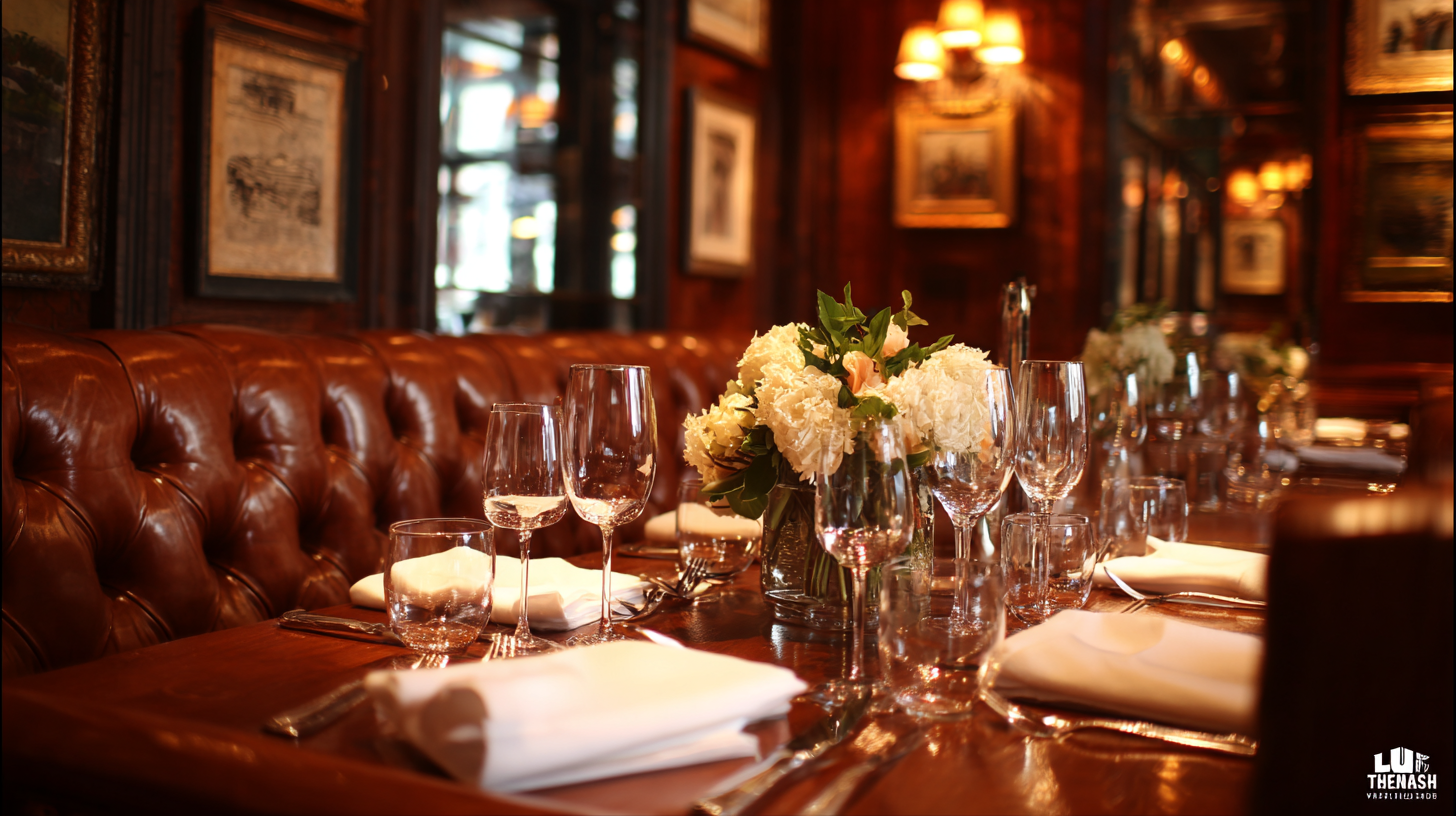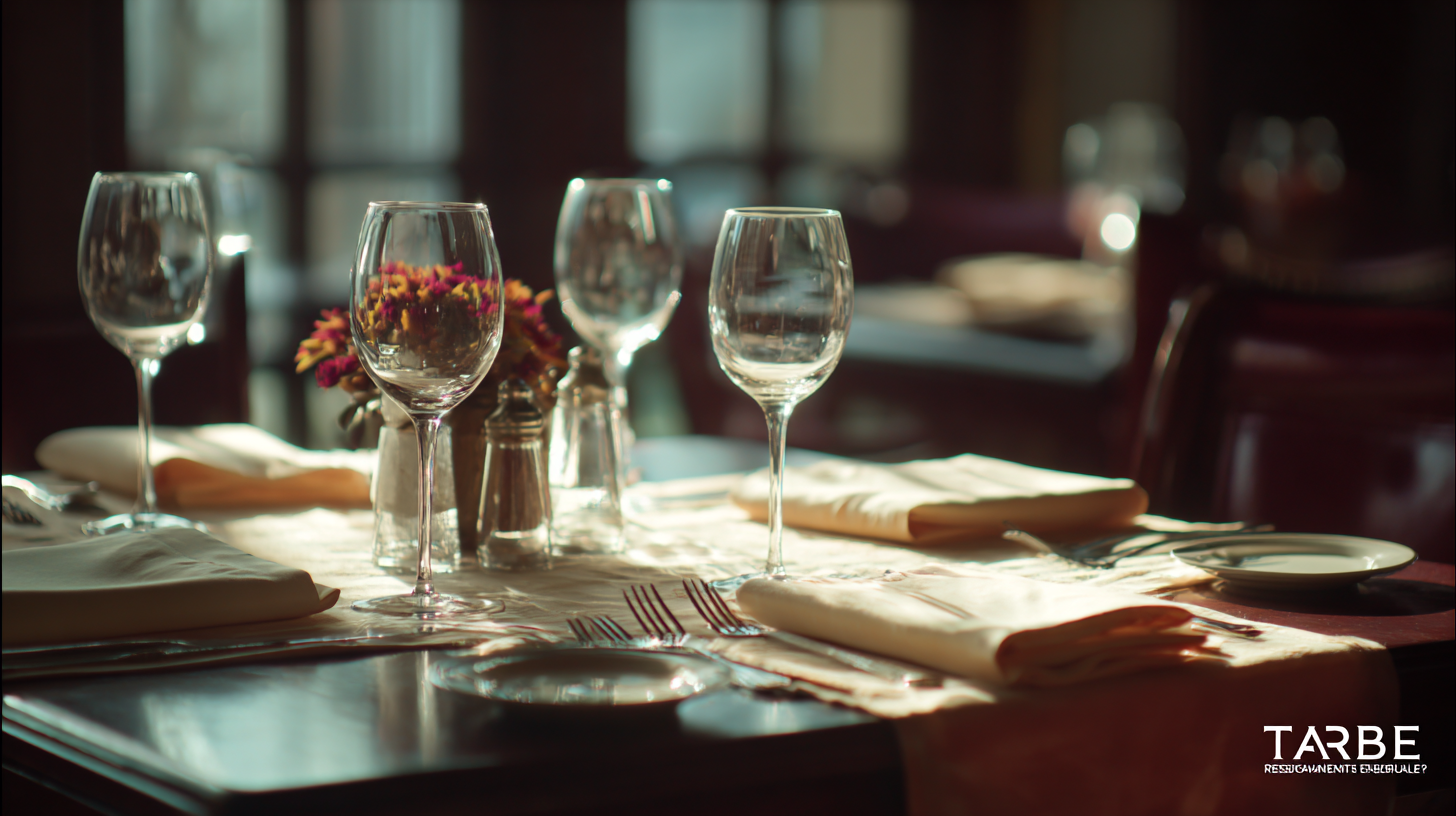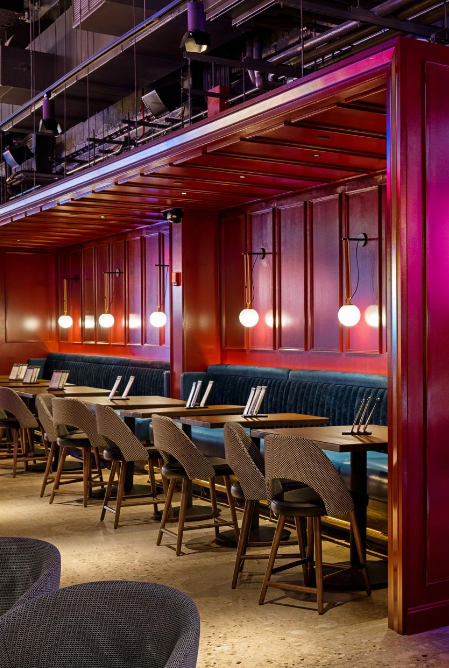In the competitive landscape of the restaurant industry, the significance of well-designed "Tables Restaurant" cannot be overstated. According to recent reports from the National Restaurant Association, 80% of diners consider the ambiance—largely influenced by furniture layout and table design—a crucial factor in their overall dining experience. Moreover, a study by the Food and Beverage Association found that restaurants that invest in high-quality tables see a 15% increase in customer satisfaction ratings. These statistics underscore the imperative for restaurant owners to carefully select tables that not only complement their brand aesthetic but also enhance guest comfort and encourage repeat visits.

In this blog, we will explore the elements that contribute to exceptional restaurant tables and their vital role in shaping unforgettable dining experiences.
The design of tables in a restaurant plays a crucial role in creating an inviting and enjoyable dining experience. A well-designed table not only enhances the aesthetic appeal of the restaurant but also contributes to the comfort and functionality for diners. When tables are thoughtfully arranged and styled, they encourage conversations and foster an intimate atmosphere, which can significantly impact guests' overall satisfaction.
Tip 1: Choose the Right Materials
Opt for materials that complement the restaurant's theme. For example, wooden tables can provide a rustic feel, while sleek metal tables may evoke a modern ambiance. Ensure that the materials used are durable and easy to maintain, as they will withstand the demands of a bustling restaurant environment.
Tip 2: Consider Table Size and Layout
Selecting the appropriate table size is vital for maximizing space and ensuring comfort. Tables should be spaced adequately to allow for easy movement while maintaining a sense of intimacy among guests. A mix of table sizes can accommodate different group sizes, making the restaurant more versatile and welcoming.
Tip 3: Incorporate Unique Design Elements
Adding unique design elements such as decorative table legs or custom table coverings can greatly enhance the restaurant's ambiance. These details not only reflect the restaurant's personality but also create a more engaging dining experience. Thoughtful touches can make tables a focal point, encouraging guests to appreciate their surroundings and enjoy their meals even more.
When it comes to creating an exceptional dining experience, the materials used in restaurant tables play a crucial role. High-quality tables not only enhance the aesthetic appeal of the space but also contribute to the functionality and comfort of the dining experience. Wood, metal, and laminate are among the most popular materials, each offering unique advantages that cater to different restaurant themes and clientele.

Solid wood tables, for instance, bring a warmth and rustic charm that can transform the ambiance of any restaurant. They are durable and can withstand heavy use, making them an excellent choice for bustling establishments. On the other hand, metal tables provide a sleek and modern look, perfect for contemporary dining spaces. Their resilience and ease of maintenance make them ideal for outdoor seating or high-traffic areas. Meanwhile, laminate tables offer versatility in design and color options, allowing restaurants to customize their tables to fit specific interior styles while remaining budget-friendly.
Ultimately, the choice of material for restaurant tables is essential in shaping the overall dining experience. High-quality materials enhance not only the visual appeal but also the comfort and longevity of the tables, ensuring that guests enjoy their meals in a setting that reflects the establishment's brand and ethos.
When it comes to enhancing the dining experience, the size and shape of tables play a crucial role in how patrons perceive their time in a restaurant. According to a 2021 report by the National Restaurant Association, approximately 65% of diners believe that the layout and spacing of tables significantly affect their overall satisfaction. A well-considered table setup not only optimizes the available space but also creates a comfortable atmosphere that encourages diners to linger.
The influence of table shape further adds to the dining experience. Research indicates that round tables foster more engaging and intimate conversations compared to rectangular ones, which often promote a more formal atmosphere. A study published in the Journal of Hospitality and Tourism Research found that diners at round tables reported a 20% higher satisfaction rate in their interactions with companions. This highlights the importance of choosing the right table shape to align with the restaurant's intended ambiance, encouraging social interactions and enhancing overall customer experience.
Ultimately, the thoughtful selection of table size and shape is essential for creating a dining environment that not only meets but exceeds customer expectations, turning a simple meal into a memorable occasion.
In today's rapidly evolving restaurant landscape, the design and quality of tables play a crucial role in shaping the dining experience. Recent data indicates that more customers are making reservations earlier in the week, particularly on Mondays and Tuesdays, highlighting a shift in consumer behavior. As restaurants adapt to these trends, the importance of a comfortable and inviting table becomes paramount. The table is not merely an object; it invites conversation, creates ambiance, and influences customer satisfaction.
Additionally, the rise in solo dining is reshaping table design needs. With an increasing number of individuals choosing to dine alone, the industry must cater to these guests by providing cozy yet functional seating arrangements. According to statistics, more people are booking tables for one, emphasizing the necessity for restaurants to rethink their layouts and table configurations. Furthermore, innovations in table manufacturing are already emerging, paralleling China's significant advancements in manufacturing capabilities, which are driving global trends in restaurant furnishings. As the dining experience continues to evolve, the selection of the right tables becomes essential to meet the demands of diverse consumers.

When it comes to enhancing the dining experience in restaurants, customization plays a pivotal role in creating unique dining spaces that reflect a brand's identity and cater to customers' preferences. Custom tables can be tailored in size, shape, and material, allowing restaurants to maximize their space while ensuring comfort. For instance, a cozy bistro may opt for round tables that facilitate intimate conversations, while a modern eatery might select sleek rectangular tables to create a contemporary feel. This level of personalization not only makes the dining area more functional but also allows patrons to feel a deeper connection with the environment.
Moreover, customized tables can serve as conversation starters, adding an artistic element that enriches the overall atmosphere. By incorporating local craftsmanship or thematic designs, a restaurant can showcase its unique story and values, making each dining experience memorable. Elements such as color palettes and finishes can be aligned with seasonal themes or special occasions, further enhancing the ambiance. Ultimately, the integration of customized tables not only improves the aesthetic appeal of a restaurant but also fosters a sense of belonging for customers, making each visit a distinctive experience.
This bar chart illustrates the influence of various customization features on customer satisfaction in restaurant dining experiences. It highlights how elements such as table design, material quality, and flexibility in arrangement contribute to an enhanced dining ambiance.
©2024 Pine Vista LLC, DBA Design Manufacturing Group. All Rights Reserved.



©2024 Pine Vista LLC, DBA Design Manufacturing Group. All Rights Reserved.
